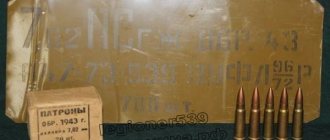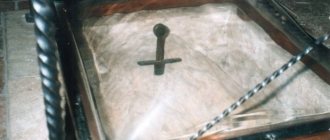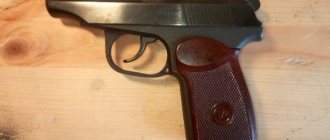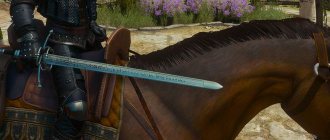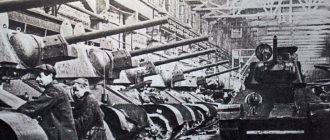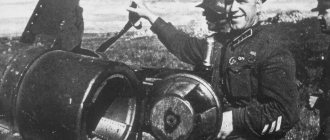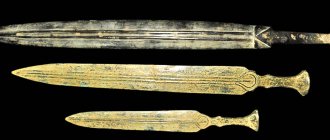In the mail that comes to the editorial e-mail, the same question often appears. People want to know how much the sword of Prince Alexander Nevsky weighs. Alas, everything is not at all simple here.
There are three known swords that are attributed to Russian princes. This is the Carolingian sword of Prince Svyatoslav Igorevich, the Gothic sword of Prince Dovmont of Pskov, and the one-and-a-half-handed sword of another prince of Pskov, Vsevolod. Let's briefly touch on each of them.
Sword of Prince Svyatoslav Igorevich
We have already mentioned the sword of Prince Svyatoslav in the article “History of the Sword: Carolingian Strike”. In short, this is a Carolina type sword, very well preserved and richly crafted. It was found completely by accident - on November 7, 2011, Kiev resident Sergei Pyankov cast a fishing rod and pulled a 96-centimeter sword out of the water.
There are actually no reasons to attribute this sword to Svyatoslav. Yes, this is a very ornate sword. Yes, he is a contemporary of Svyatoslav. Yes, he was found in the very place where Svyatoslav gave his last battle. All this - yes, it is so.
However, nothing confirms that it was Svyatoslav who fought with this sword. Not a single stroke confirms it!
Traditions and interesting facts
The two-handed sword has firmly entered into European culture and is still associated with the ideals of nobility and chivalry. Although it was often used for diametrically opposed purposes. Such weapons are still used for various ceremonies. For example, in Great Britain the rite of knighting is still “alive”.
Medieval ceremonial swords were simply huge. The largest of them, surviving to this day, has a length of 2.15 m and a mass of 8.6 kg. The handle is oak, covered with tanned goatskin. The weapon was most likely manufactured on the territory of modern Germany. It was, of course, not used for its intended purpose.
The configuration of the weapon is very similar to the Christian cross. This was done on purpose; the right angles of the arms of the cross had no practical significance. But this form symbolically turned the knight into a “defender of the faith.”
The sword was not such a typical weapon for the Middle Ages. Its high cost was a hindrance. For a blade of average quality you had to pay an amount comparable to the cost of 4-5 cows. Firstly, there was a shortage of good metal, and secondly, blacksmiths qualified enough to create it. Not to mention that mastering a weapon required years of training, starting from childhood.
The two-handed sword left indelible marks in the history of medieval wars. With the appropriate skills, this weapon produced a devastating effect. This type of sword appeared later than all the others, almost at the end of the Middle Ages, but managed to “evolve” into several varieties, each with its own functional purpose. With the invention of firearms, the practical need for them disappeared, but the knight's sword still performs ceremonial functions.
Sword of Prince Vsevolod of Pskov
Prince Vsevolod Mstislavich was the grandson of Vladimir Monomakh and nephew of Yuri Dolgoruky. As a matter of fact, his uncle did not like Vsevolod very much and at one time even took his inheritance by force - the Principality of Pereyaslavl.
All these events took place back in the 12th century. But the sword that is attributed to him is a one-and-a-half-handed sword of the Gothic type. Quite the 14th century. Previously, this type of weapon simply did not exist!
There is another nuance. The sword contains the inscription “Honorem meum nemini dabo” - “I will not give my honor to anyone.” The font in which it is made is called “Gothic minuscule”, and it appeared only at the end of the 14th century.
As for the scabbard, its fastenings for the sword belt, according to experts, are generally characteristic of the 15th century.
In a word, there is a substitution. Apparently, the real sword of Prince Vsevolod became unusable over time or was lost. It was then that it was replaced with the best sword, the one most worthy of the memory of the Grand Duke.
Real weight
The claymore weighs on average less than two kilograms and is lighter compared to the zweihander. But only physically trained and strong warriors could fight with such weapons. The sword is balanced so that it can only be held with two hands. In this case, the blow turns out to be a crushing force. The fighting technique consisted of circular swings and “figure eights” with the blade, which increased the power of the blow.
In addition to military ones, souvenir specimens are known for ceremonies and hall decoration. They are distinguished by rich decoration and inlay with precious stones. Such claymores reach two meters in length and weigh twenty kilograms.
Sword of Prince Dovmont of Pskov
Not everything is simple with Prince Dovmont’s sword either. Let's start with the fact that Prince Dovmont himself is a very interesting person. He was expelled from the Baltic states, where he reigned and found a new homeland in Pskov. The Pskovites, under his command, defeated the Teutonic Order in the battle of the knightly castle of Rakvere - this battle is also called the Battle of Rakovor.
Now about the sword of Prince Dovmont. This is a one-handed sword of the Gothic type, which we talked about here
The legendary researcher and sword collector Ewart Oakeshott points out that Gothic-type swords were used at the end of the 13th century, but came into widespread use in the 14th century.
And here the situation is “50/50”. In principle, Dovmont could have wielded such a sword, but then it must have been one of the very first swords of its type. And if this turns out to be true, then we have another reason for national pride.
LiveInternetLiveInternet
The appearance of the first bronze swords dates back to the beginning of the 2nd millennium BC. e., and were used until the end of the 16th century. Although by the end of the 14th century in Rus' the saber had finally replaced the sword, and in the 17th century swords in Europe were replaced by swords and broadswords. The main material in ancient times for making blades was bronze; it was distinguished by its decent weight and high price. The use of elastic steel for the blade made it possible to improve chopping functions. In the Middle Ages, the sword received many modifications. In the 16th century, long and narrow swords appeared in the arsenal of European cavalry, well suited for striking forward, but also capable of cutting through helmets. Piercing swords and swords with a wavy blade appeared, double-edged, less often sharpened only on one side. A complex guard begins to be actively used, providing maximum protection for the hand. As a rule, swords have longitudinal grooves - blood flows. It is believed that they serve to drain blood when the blade hits the enemy’s body. Indeed, blood flows down them. However, the blacksmiths did not make them for these purposes at all, but in order to give the blade additional rigidity and lighten its weight.
One-handed swords (brake, one-handed)
– the weight of a one-handed sword can reach 1.4 kg with a length of up to 80 cm. The width at the guard is 5 cm, at the end 2.5 cm, thickness 5.5 mm. The width of the blade decreases evenly to 2/3 of its length, the remaining 1/3 narrows and ends (most often) with a rounded tip, i.e. has a slightly curved blade, which has a positive effect on the cutting and piercing properties of the blade.
Xiphos is a sword with a narrow laurel leaf blade up to 60-65 cm long and a massive bronze handle. This was a weapon for fighting in a close phalanx; it was convenient for them to deliver short piercing and ripping blows to the enemy’s unprotected face and thighs. The scabbard was made of wood with copper plates.
Kopis and mahairs based on it (from κόπτω in Greek and means “to chop, cut off”) are forward-curved swords with a one-sided sharpening of the blade, intended primarily for chopping blows. They were widespread in the ancient Near East from Egypt to India. After the conquest by Alexander the Great, it spread to Greece and became the national weapon of Iberia (modern Spain), where it was probably brought by merchants and mercenaries around the 6th-5th centuries. BC e. where it became known as Falcata, then it was adopted by the Romans.
Gladius, gladius (lat. - gladius) - a legionary double-edged sword, originated from the Spanish sword and was called gladius hispaniensis - “Spanish gladius”. Total length 60-70 cm, handle length 15 cm, weight about 1.1 kg.
Spatha, spatha (spatha) - a long cavalry sword of the Parthian type, was used in the Roman army from the 3rd century. AD Straight sword 75-85 cm long and 4-5 cm wide, weight about 0.8 kg.
Parazonium (lat. - parazonium) is a short belt sword of military leaders. (Sometimes it is classified as a dagger).
Akinak (Greek - acinaces) is a traditional Scythian sword. It is also found among the Persians, in the Near and Middle East. It was a short sword 30-50 cm long with a straight, double-edged, symmetrical blade with a triangular tip. They could deliver both piercing and slashing blows. It was made of iron and had a butterfly crosshair. They wore the akinak on the right, with the scabbard attached to the belt, and sometimes tied to the right leg.
Obsidian sword - Aztec sword. Shards of obsidian were attached in a row to a wooden sword form, which gave a sharp cutting edge-blade.
Liuedao is a Chinese sword with a thin flexible blade. The guard is oval or round. The handle is round, slightly curved towards the blade, tapering towards the guard. Often a scarf or ribbons were attached to the handle. The length of the sword was determined by the distance from the lowered hand to the ear. Weight 0.6-0.7 kg.
Jian Taiji is a double-edged sword, the blade of which tapers to the tip and has one edge on each side. Cheren with a round pommel and a bunch of ribbons. Used in the practice of Tai Chi and Wu Shu - sword dance. The set of movements is logically ordered, closely connected and makes clear the use of various sword techniques, such as: Ci (stab horizontally or upward), Pi (cut), Liao (reflect upward in a circle), Gua (stab from above), Dian (cut with the tip sword down due to the movement of the hand), Mo (cut horizontally or at an upward angle), To (raise up), Jia (raise the enemy’s weapon above his head), Sao (cut in a horizontal circle), Jie (stop), Zha ( thrust downwards), Tui (push), and Hua (circular neutralizing fighting techniques).
Koshigatana (“sword worn on the lower back”) is a Japanese small sword with a blade length of up to 45 cm. It was worn in a belt tied over the armor.
Sundang is a Malay sword with a wide single- or double-edged blade. Total length 60 cm.
Fleece is a traditional African weapon, common in the Maghreb countries (Morocco, Algeria, Tunisia, etc.). Single-edged sword. The total length is 36.5 cm. The scabbard was usually made of metal or wood and was richly decorated with traditional ornaments. Distinctive features are the shape of the handle in the form of a stylized animal head.
Broard is a European broadsword.
Carolingian - European sword of the 6th-10th centuries. It got its name from the French Carolingian dynasty. With a straight double-edged blade, less often - a single-edged blade and a blade beveled to one side. Length 80-90 cm, width 5-6 cm. It was widespread in Europe, Rus' and Scandinavia.
Saw sword - the sword of Venetian sailors of the 16th century. with a blade tapering towards the tip, one blade of which has a sawtooth sharpening. Blade length up to 45 cm.
Shuang Dao (China) – paired wide curved swords.
Schiavona (schiavona - Slavic) is a sword with a long blade and an openwork closed guard. The schiavona is characterized by a straight, double-edged blade about four centimeters wide and about 90 centimeters long. These weapons were armed by the inhabitants of Slavonia and Dalmatia, who served in the Venetian mercenary infantry and in the guards of the Venetian doges in the 16th century. It became widespread among cuirassiers.
Scottish broadsword (highland broadsword) (English - highlander's sword) is a Scottish sword, with a long blade and an openwork closed guard, the so-called “basket”, which was lined with thick fabric or leather from the inside. (Similar to schiavona). Total length about 80 cm. Known since the 16th century..
Cinquedea (cinquedea, sandedei, cinque dea) is an Italian, straight short sword with a double-edged blade, very wide at the hilt. Length – 60 cm, width of the handle 5 fingers (palm). The handle is usually made of bone or wood. Another name is ox tongue (linqua di bue). Sometimes classified as a dagger.
Tachi is another name for this sword - daito (“big sword”), single-edged, thin, slightly curved, with a short and rather sharply curved handle. It was the main type of sword from the middle of the Heian era (9th and 10th centuries) to the middle of the Muromachi period (15th century). The blade is usually 65 - 75 cm long. The guard was four-lobed or round in shape. The tachi was usually worn blade down, paired with a koshigatana suspended from the belt. Existed before the advent of the katana.
One-and-a-half-handed, one-and-a-half (one and a half)
- have a characteristic division of the handle into two parts, or simply a long handle, or in the form of a sword with an unsharpened part of the blade at the handle, which was called the fifth. The heel made it possible, if necessary, to intercept the weapon with both hands. The crosspiece of the one-and-a-half-piece was elongated and could have arches to protect the second hand. The length is longer than a one-handed sword, but no longer than the owner's solar plexus. Weight from 1.2 kg to 2.4 g. They strike with chopping and cutting blows.
Bastard sword is a “bastard” sword, as the bastards were called, so named for the uncertainty of its grip: it is either one-handed or two-handed. European sword of the 14th century. Blade length 90 - 120 cm, handle length - 18 cm, weight 2-3.5 kg. A simple bastard does not have a second delimiter on the heel.
Kiento (Japanese - leader's sword) is a sword with a straight or wavy double-edged blade up to 6 cm wide with an arrow-shaped thickening at the end, a guard in the form of a parabola or a horseshoe and an elongated handle. Total length 105 - 135 cm.
Katana is a sword usually with a round tsuba, a single-edged blade of slight curvature and a two-handed handle. As a rule, it was worn tucked into the belt, paired with a wakizashi. Came into use from the 16th century. It was the main military weapon. Total length 100-110 cm.
Ninja is a sword used by ninjas. The blade is straight, single-edged, with an edge beveled towards the blade, 50-60 cm long, 2.5 cm wide, 5 mm thick. The handle is 30 cm long, with a removable round pommel with a needle. A needle, naturally poisoned, in case of a failed operation or a long-distance murder. The cavity is also used for storing various bulk substances. The guard is square, with a side of 8 cm. Koshirae (sheath) - has a groove for a knife in the upper part, and a groove for a dagger and a mount for a sword at the tip. The sword was carried on his back. In some cases, a koshirae is attached to the ninja to lengthen the handle.
Kum (Korean - sword) is a Korean sword with a blade up to 80 cm long and a handle one and a half times the size of a fist.
Katzbalger, katzbalger (“koshkoder”), lansknetta - sword of the 16th - 17th centuries. Lansquenetta is sometimes mistakenly called this. The length of the blade is from 50 cm to 100 cm, it could have a comfortable handle for gripping with two hands. It is believed that it got its name from the fact that the skins of red cats were used for its scabbard. But the origin of the name from “cat dumps” - a term for close combat - is considered more plausible.
Jagdschwerter – long, straight hunting swords. They appeared around 1470 and owe their appearance to a great specialist in hunting - Emperor Maximilian I. The blade, as a rule, is single-edged, straight or slightly curved, about 85 cm long. The blade looks like a rod for approximately three-quarters of its length, and then sharply expands, turning into a strip and ending with a point. Very often, an iron horn was inserted across the blade, its ends bent towards the tip, to prevent it from penetrating too deeply into the body of the beast. Characteristic of hunting swords were sheaths with sockets, where various knives for cutting carcasses and an awl for separating veins were stored. At the beginning of the 16th century. The hunting sword has changed: the blade has shortened (from 35 cm to 55 cm), become lighter, turning into a hirschfanger.
Estoc, Tuk (from French and Italian - estoc) - European, straight sword of the 13th - 16th centuries. Intended for thrusting and piercing armor with a powerful piercing blow. The length of the blade was from 110 to 120 cm, the length of the handle was 33-34 cm, the width of the guard was 25-27 cm. The total length was from 110 cm to 140 cm. Weight was from 0.8 to 1.5 kg. Belonged to the saddle family, i.e. such swords, the scabbard of which was fastened to the saddle, and was thus in service with the cavalry.
Two-handed swords (two-handed)
— giants weighing 3.5-8 kg with blades 120 cm long and necessarily have divisions on the handles. Two-handed weapons became widespread due to the development of protective equipment: a fighter in durable plate armor could abandon the shield in favor of greater speed and force of blows. The sword is held with a wide grip so that the right hand lies near the guard, the left hand near the pommel, and the distance between them should be no less than a palm. When delivering a slash, one hand moves the sword, and the other, on the contrary, pulls. Injections are most often performed with one hand; the left one only helps in the initial phase by pushing the sword out. The benefit of two-handed weapons was their ability to pierce solid armor (with such a length of the blade, its tip moved very quickly, and the weight provided greater inertia) and long reach. Two-handed swords were used only by a small number of very experienced warriors, whose height and strength should exceed the average level. These warriors, being at the head of the detachment, break the shafts of the pikes and pave the way, overturning the advanced ranks of the enemy army; following them along the cleared road are other foot soldiers.
Khopesh (the word means the front leg of an animal) - consisted of a sickle (semicircular blade) and a 50cm handle. It was made of bronze and had a decent weight, if not it could have been a lorry. The width of the blade expands towards the tip. Thanks to the forward curved blade, the cutting ability is significantly increased compared to a straight sword.
Miao-dao (Chinese - sprout sword) is a Chinese copy of a samurai sword. Total length 140-150 cm, stem length 40 cm.
Nodachi (Japanese - field sword) - a sword with a blade more than 100 cm, worn behind the back or on the shoulder.
Alpshis (Ahlspiess) - a piercing two-handed sword with a wedge-shaped blade with a round guard.
Claymore, claymore (claymore, from Gaelic claidheamh-more - large sword) is a two-handed Scottish sword with a narrow blade, a long handle with a simple guard of two crossbars, turned to the blade at an angle of 45°. Since the 18th century, Scottish broadswords have also sometimes been called claymores. Also known as "kleidhim mor" from the mid-16th century.
Konchar (Turkic) is an ancient Russian and eastern piercing weapon - a sword of a mounted warrior with a straight, long (up to 1.5 m) narrow three- or tetrahedral blade. Served to defeat the enemy through ringed armor. Used in the XIV - XVII centuries. In the Polish and Hungarian cavalry, konchars were worn on the right side, suspended from a belt or saddle. In Russia, konchars were mentioned for the first time in legends about the Battle of Kulikovo (1380), but they were not widely used in the Russian cavalry.
Zweihander is a German two-handed double-edged sword, length from 165 cm to 200 cm. Weight from 3.5 to 6 kg. Existed from the 16th to the 17th centuries.
Slasher (hard sword) is a classic sword of English mounted knights. Length up to 200 cm, weight up to 8 kg. Can be seen in the computer game of the same name.
Spadon (spadon) is a Swiss double-edged sword, length from 165 cm to 200 cm. Weight from 3.5 to 6 kg. Existed from the 16th to the 17th centuries. The guard consists of two long and massive arches, sometimes complicated by side rings and in most cases slightly descending to the blades. When walking, the sword was worn in a sling made of a wide belt on the right shoulder.
Flamberge (flame) is a German-Swiss two-handed sword with a wavy (flame-shaped) blade. The handle was usually covered with cloth or leather, and was designed for 3-5 grips. The length of such swords could reach 150-190 cm, the thickness of the blade at the base was 0.8-1 cm, and the weight was from 4 to 5 kg. Used mainly from the 15th to the 17th centuries. The main feature of such swords was the infliction of terrible wounds. Flamberge swords were difficult to manufacture and expensive.
Sword of Justice - served to carry out death sentences through beheading. The oldest swords for this purpose appeared at the end of the 12th century. The shape of the blade remained unchanged until the 18th century. The sword is wide, rounded at the tip, where at times a hole was made. The executioners inserted a lead bullet into this hole and thereby increased the force and severity of the blow (this information relates only to the 18th century). Earlier authors report swords of justice equipped with a cavity half filled with mercury. When struck, the mercury rushed towards the tip with force and significantly increased its power. Most swords of justice bore inscriptions and symbols indicating their sad purpose. The blades depicted a gallows, a block, a quartering wheel, a crucifix, various saints and their exploits, the coat of arms of the city, Themis with scales, etc. The hilt of such a sword had two full grips. If the sword of justice had a sheath (which was not always the case), then it was accompanied by additional compartments for knives that were used for special methods of capital punishment.
Museum exhibits
Medieval claymores are kept in museums in Great Britain, Scotland, Ireland and the USA. The most famous exhibits:
- Scottish short blade 87 centimeters long;
- rare swords found in the rivers Bann in Ireland and Ayr in Yorkshire;
- specimens in the British Museum and in Glasgow weighing up to 2.5 kilograms;
- an early 16th-century two-hander in the Fitzwilliam Museum, Cambridge;
- a rare one-handed example in the Philadelphia Museum, transferred from a private collection.
The one-and-a-half-handed sword in the Kelvingrove Museum in Glasgow, weighing almost 1.5 kilograms, dates back to 1450. The wide blade tapers and ends with a rounded tip. The wolf stamp means it was made in Germany. A unique specimen with an engraving in the form of a lion on the blade has been preserved in the Dublin Museum. Historians suggest that it was forged by craftsmen from Lüneburg.
One of the largest two-handed swords, formerly owned by a Highlander, is in the Edinburgh Museum. Its length, including the hilt and blade, is 148 centimeters, and its weight is 2.6 kilograms. The guard at the ends is decorated with quatrefoils made of circles.
The famous sword of William Wallace, a revolutionary of the late 13th century, is kept in the Scottish city of Stirling. His image was embodied by Mel Gibson in the film “Braveheart”. Wallace's blade weighs 2.7 kilograms. It is one of the largest surviving weapons with a total length of 163 centimeters.
How much did the Spartans' armor weigh?
The Spartan's armament consisted of a spear, a short sword and protective weapons: a round shield, a helmet, a chest armor and leggings. The weight of protective weapons reached 30 kg.
Interesting materials:
How to set up bots in Dota? How to set up Edge Browser on Windows 10? How to adjust the frequency on a Samsung TV? How to set the MODE SET clock? How to set the clock on a Vitek microwave oven? How to set up the home page in Opera? How to set up access to Google Sheets? How to set up the express panel in Google Chrome? How to set the equalizer on a Japanese radio? How to adjust the image on the projector?

